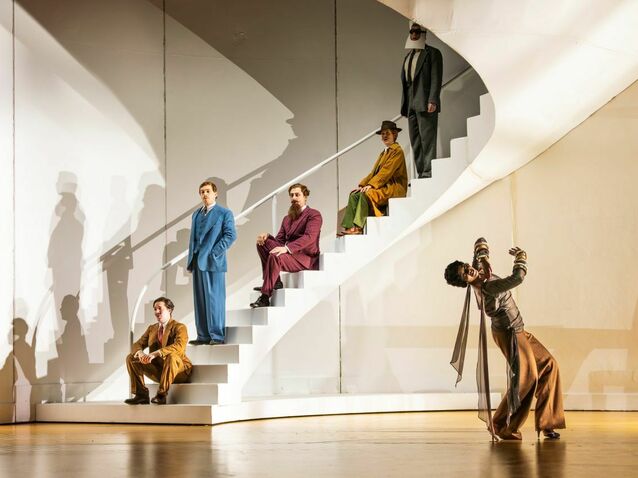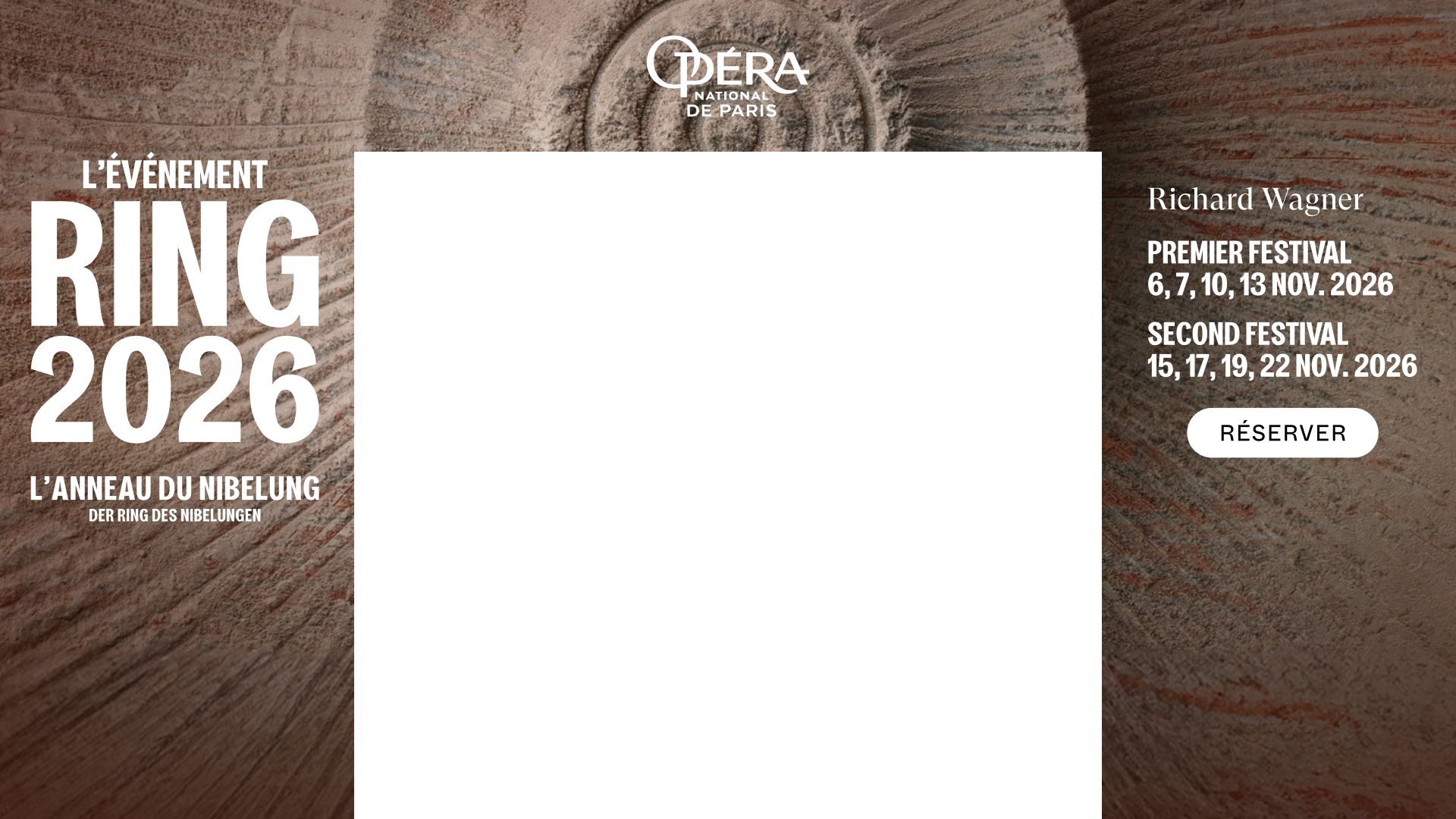 © Lloyd Winters / ENO
© Lloyd Winters / ENO
Georg Friedrich Haendel’s Partenope, which premiered at the King's Theatre in London on 24 February 1730, follows the structure and forms of opera seria. It can hardly be described as such, however, since it is so humorous in tone, while the music is relatively light textured. Its libretto was adapted by an unknown hand from one originally written in 1699 by Silvio Stampiglia, and the story’s frivolous nature led the opera company the Royal Academy of Music to reject the libretto when it was originally proposed to them in 1719. Partenope was received favourably on its premiere, notching up seven performances during its initial run and a further seven in December 1730, before being revived in 1737. As with other Handel operas it then went unperformed for around two hundred years, but today it is often seen in the world’s opera houses.
The story itself concerns Queen Partenope, founder of Naples, who has three suitors, Arsace, Emilio and Armindo. Arsace, however, wronged his former lover Rosmira, who has now disguised herself as a man (Eurimene) in order to win him back. She is, however, too independently minded to fall back into his arms at the earliest opportunity, and also pretends to be in love with Partenope as a part of her plan. Emilio is a prince from neighbouring Cumae who attempts to win Partenope by conquering her kingdom, but is captured in battle. Armindo meanwhile wanders around like a lovesick puppy, initially too afraid to declare his love for the Queen. After a number of twists and turns, Arsace and Rosmira are reunited, Partenope chooses Armindo as her husband and Emilio is freed to return to Cumae.

Ru Charlesworth, Nardus Williams, ENO’s Partenope 2025 © Lloyd Winters
Christopher Alden’s production for English National Opera premiered at the London Coliseum in 2008, and was first revived there in 2017. It finds an exceptionally appropriate setting for the drama by placing it in a 1920s Modernist house in Paris, designed by Andrew Lieberman. Each character then adopts the persona of an artist associated with the Surrealist movement. Emilio is Man Ray as he wears a mask and composes, takes and develops photographs, while Partenope could be Lee Miller and Ormonte, André Breton. At the start Partenope sits alone as the five men (if we include Rosmira in disguise) descend the spiral staircase adopting poses and attire, courtesy of costume designer Jon Morrell, that we might associate with the Surrealist movement. Then we see Armindo hanging from the staircase during ‘Voglio dire al mio tesoro’ (Jake Ingbar impressively maintaining perfect pitch the whole while), and Emilio arranging the other characters on the floor for a photograph in ‘Anch'io pugnar saprò’, so that they sing their following recitative lying down. Elsewhere, people play cards while drinking whisky and wearing gas masks, and desires or anger are expressed through the eating of bananas or the throwing of glass at a picture of a couple on the wall.
The reason the chosen setting works so well for the opera is because the arias, quite typically for Handel, are not just about feelings per se, but about the act of expressing those feelings. Surrealists too would have placed much emphasis on the act of expression, so it makes perfect sense that an aria might become a forum for playing out their emotions, almost as a piece of performance art. Characters in Handel operas can be extremely self-centred because they often think nothing of sending whole armies into battle in pursuit of fulfilling their own individual desires. Similarly, many of these Surrealists had big personalities that meant they saw their own assertion of self as paramount, and perhaps even viewed any love triangles they became caught up in as artistic in their own right.
The battle scene that begins Act II is notable already for being rendered with orchestral passages interspersed with recitatives and ariosos. It thus feels like a natural extension to have it presented here with no obvious bloodshed and half of the characters quaffing champagne for its duration, thus representing the war either as a piece of performance art or as a state of mind. This also works because Emilio goes to war with Partenope to try to win her heart, while the wider set-up of the opera also feels intrinsically Surreal. It is about deep desires, above which lie layers of intrigue as characters do not move in straight lines to achieve their objectives, thus tying in with notions of the subconscious.

William Thomas, ENO’s Partenope 2025 © Lloyd Winters
There are allusions to other things as well. The drama is served up with quite a large dose of, quite literally, toilet humour, but Surrealists were not beyond indulging in what we might describe as that. Emilio sports a traditional Pickelhaube helmet for the battle and spends the first part of it sitting away from the main action, alluding to how trench warfare was ‘led’ during the First World War. The Modernist building we see seems to represent a conversion of something more traditional, suggesting the sweeping away of the old. One of Ormonte’s costumes in Act III combines a Pickelhaube with cabaret style attire suggesting a clash between the values of the old German Empire and the Weimar Republic. In fact, the setting does constitute a dramatic challenge to traditional hierarchies as Queen Partenope enjoys breakfast with Armindo and Ormonte all in their dressing gowns, showing how she rules through her skills and personality rather than just her position.
Nardus Williams captures the title role perfectly as with her beautifully radiant soprano she shows how she keeps control of everything and everyone through the power of her presence. As Arsace Hugh Cutting displays a light and ethereal sounding countertenor, while Jake Ingbar is similarly impressive as Armindo, with his own countertenor, in comparative terms, possessing just a little more weight. Ru Charlesworth asserts the character of Emilio and a persuasive tenor to tremendous effect; Katie Bray, with a compelling and nuanced mezzo-soprano, is a suitably strong minded Rosmira, while William Thomas reveals a firm and engaging bass as Ormonte. If the soloists could hardly be faulted, the same could be said of the Orchestra of English National Opera, which ensures that the playing remains perfectly poised, paced and balanced throughout. It is conducted by Baroque specialist Christian Curnyn, but on opening night he was taken ill after Act I. This left assistant conductor William Cole to lead the rest of the evening, but in terms of the sound that emanated from the pit the switch felt completely seamless.
By Sam Smith
Partenope | 20 November - 6 December 2025 | London Coliseum
the 23 of November, 2025 | Print


Comments